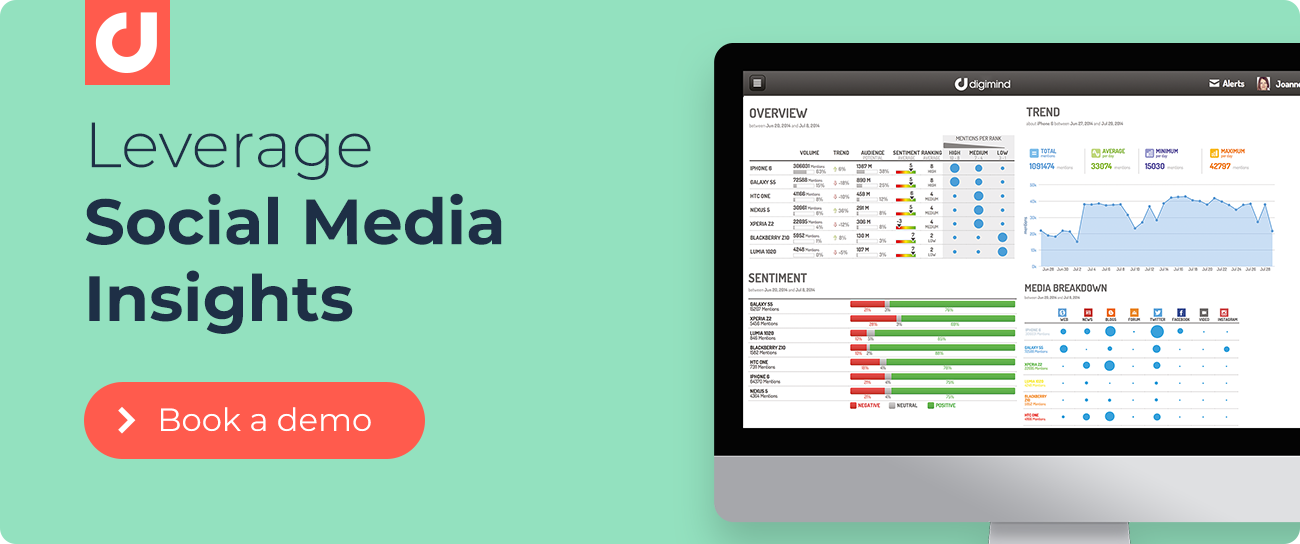Listening Beats Guessing: 5 Real Reasons Why Social Listening Wins The Game Of Brand Reputation
BullsEAR Is The New BullsEYE!
Place your bets people! The score is tied at
Social Listening: 0 | Guessing: 0
But that’s likely to change very soon! In this corner you have Social Listening, the AI-supported social intelligence tool that allows marketing and insights professionals to acquire key consumer insights based on valuable data derived from social media. And in the other corner you’ve got Guessing, the process by which those same professionals (and pretty much everyone else and their grandmothers) trust their “gut feeling”, and just throw their darts blindly at the board in the hopes that something sticks.
The rules are simple - we go in five rounds, with each new section a chance for Social Listening and Guessing to show their stuff and throw their darts into the darkness, guided only by what they do best: data-driven accuracy vs. intuition. The importance of this matchup is more important than you might realize, with brands across the spectrum still underestimating the importance of social listening as a vital weapon in the war against poor marketing decisions. Marketers should never rule out the value of social media monitoring, especially in this more digital-focused age, ever more reliant on social media platforms for direct consumer engagement. Guessing is a losing persons game, with no evidence to back it up outside of those that swear by its usefulness. That being said, let’s give both players their fair shake and allow them to play the game without bias or interruption. And with that said, let’s begin!
Round 1. Choose Your Tools Carefully
Social Listening: The arsenal of strategies at the disposal of Social Listening is quite impressive, with dozens of awarded social listening tools to choose from and take advantage of. You can’t go wrong with these various software subscriptions, as any can offer a whole suite of methods by which one can glean important information on key audiences groups, customer sentiments, marketing campaign successes (or failings), a brand's image health, and how to find a potential online influencer for a brand partnership. Due to the wealth of data that can be accessed via a tool like, say, Digimind, it’s hard to fully articulate the whole scope of its offerings, though below we’ll do so in finer detail. But for now, just look at all of this:
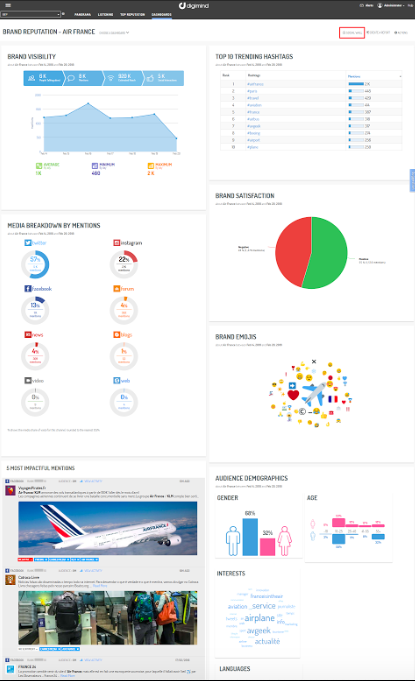
Impressive, no? It’s Digimind’s Social Listening platform.
When you do choose your tools, look for three things:
- Tool Variety - It’s important to choose a social listening tool that provides a whole slew of useful social intelligence offerings that could come in handy for research that you may not even anticipate needing at the time of choosing.
- Tool Specificity - Also, make sure to choose based on your specific needs, and this is entirely dependent on the brand itself and what you need to learn about regarding your consumers and their wants, feelings, and active interests.
- Recognition - True, you shouldn’t always judge a book by its book reviews, but in the case of social listening tools, there are some very solid review agencies that award only the best of the best with professionally certified bona fides, that are strong indicators of their value and prestige. We covered some of these strong players in a recent piece that you can also read here.
Social listening is already off to a good start with all of its offerings, and this means that already it has the advantage over Guessing right off the bat.
Guessing: The alternatives to social listening are often more direct in their approach, utilizing online or phone-based surveys and email questionnaires to formulate some sort of approximation for a full-hearted guess on a brand’s campaign strategies. This is not to say that marketing professionals that base their work off of conjecture and loose sources are completely set up to fail, but it’s very clear how there are some big holes in the validity of choosing such an approach, not the least of which is because they’re working with no solid social media-based data, no real time trend tracking, and no true insights on their brand’s true market positioning. It’s just not ideal to go it alone.
Social Listening: 1 | Guessing: 0
Round 2. Ignoring Negative Consumer Sentiments Makes Your Brand A Sore Loser
Social Listening: If you want to be a winner, sometimes you have to listen to what is contributing to your losses, and while that can be difficult for some brands, it’s actually a huge opportunity to turn negative consumer sentiment into positive user engagement and content development. Understand that when netizens of social media tweet, post, and dislike the online profiles and content of brands, they’re sending messages that vary from discontentment, to loathing, to anger, to frustration, to sadness, and everything in between. It’s the utility of social listening that allows marketing and insights professionals to dissect these diverging emotions, and create a counter measure - usually in the form of a rebranding or positive customer care engagement policy - that can not just improve the reputation of a company, but also increase its online reach and recognition (for the better, obviously).
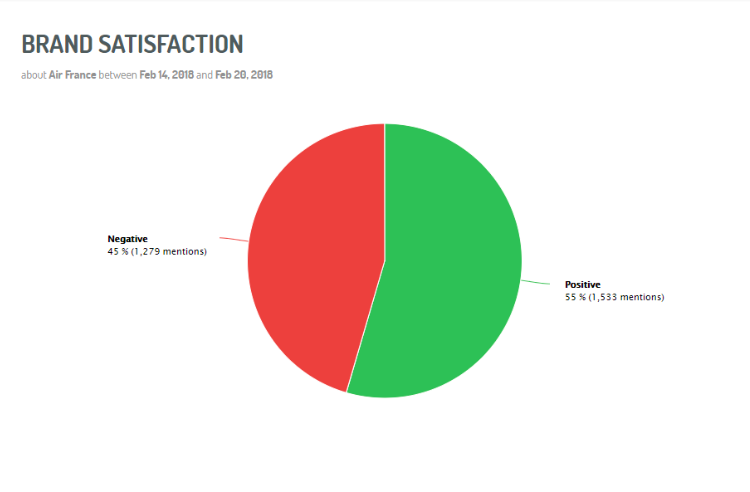
A Brand Satisfaction pie chart derived from Digimind’s social listening platform
Take the above example, if you will. This graphic, derived from social media, shows how in the month of February, 2018, Air France, the French transportation company, had a serious negativity issue, with a 45% disapproval rating compared with a 55% positivity rating. It’s not a great sign when almost half of your consumers are dissatisfied with you, but the fact that AirFrance could now potentially have that information is a good thing, and is certainly an advantage for Social Listening over Guessing for this round.
Guessing: The indicators of where a brand is failing for the Guessing camp falls squarely on sales. Did we see an increase in sales this quarter? Did we lose operating income this year? Are we hearing bad things about our latest marketing campaign around the office and from friends and family? And so on and so forth. While, yes, overall sales in the short-term can be an indicator of if your brand has some blind spots where consumers are discontent, without solid, long-term financial dips or spikes to provide substantial evidence of this, there’s little evidence to suggest that guessing is the best course of action. By the time you’ve waited a year to see whether or not there was general customer discontentment with your brand (not even getting into the fact of not knowing the who, what, where, when, and why of that discontentment), it could potentially be way too late to avoid a brand crisis, which could upend your entire business.
Social Listening: 2 | Guessing: 0
Round 3. May Positive Consumer Sentiments Guide Your Hand (And Brand)
Social Listening: On the other side of the spectrum, positive consumer sentiment provides key insights in a different way, offering companies a window into the ways in which they are succeeding with both old and new customers. By taking into account the various emotional reactions from users, like joy, satisfaction, elation, happiness, surprise, and curiosity, Social Listening takes the advantage over Guessing, as it provides on-point evidence for how well a brand’s image is doing in light of a new content strategy, or whether or not an influencer-brand partnership is living up to its expectations. Remember that positive sentiments are just that, sentiments, and it’s up to you, the marketing and insights professionals to actually investigate real posts online to see WHAT they’re saying about the brand and how these concurrent messages can help curate a better digital experience.
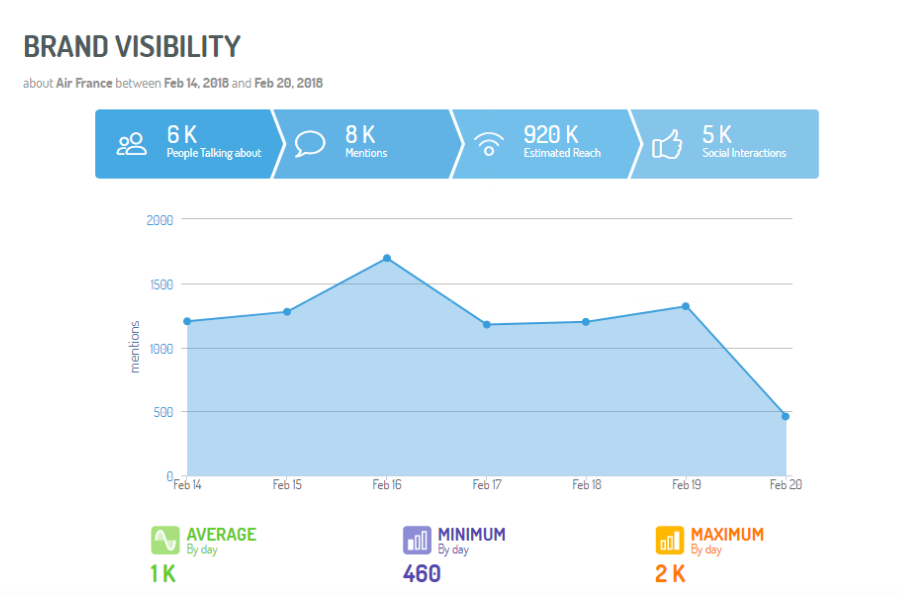
A Brand Visibility line chart derived from the Digimind platform
In the image above, we can see how this example of Air France’s brand visibility spikes on February 16th, which, combined with a yet-to-be established consumer sentiment analysis, could offer the air travel company an idea of what they did so successfully to elicit such visibility, versus a day like Feb 20th. That gap in data that Guessing can’t provide is reason enough to see an inherent value in Social Listening that you just can’t get anywhere else. Nice throw player!
Guessing: A swing and a miss here for guessing, unfortunately. Making assumptions based on conjecture and hearsay is about as helpful as putting on a blindfold while throwing darts at a board. Not a good idea. What’s even worse about this approach, is that by assuming positive sentiments are a sign of doing something well, as opposed to just simply not doing something poorly (neutral sentiment), then you’re leaving yourself up to some very problematic issues, such as consumer engagement neglect, loss of brand credibility, and again, the risk of not seeing a serious PR crisis that could potentially be burning right under the nose. You’re out!
Social Listening: 3 | Guessing: 0
Round 4. There’s Value In The Subjects That Your Brand’s Customers Find Value In
Social Listening: Things are not going well for Guessing, and they’re about to go from bad to worse. Social Listening is one of the best ways to identify the exact subjects, and issues of importance that are resonating with consumers in real time. Content that’s based on trending news, stories, videos, and images, are the strongest kinds to put out on social media, because they’re directly influenced by what’s most popular (or at least most talked about) on social media. A Keyword Search or Top Hashtag inquiry will lead to some very powerful revelations that brands would do well to keep an eye on. Guessing, on the other hand, pales in comparison as there’s practically no way this time for it to match this sort of impressive strategy.
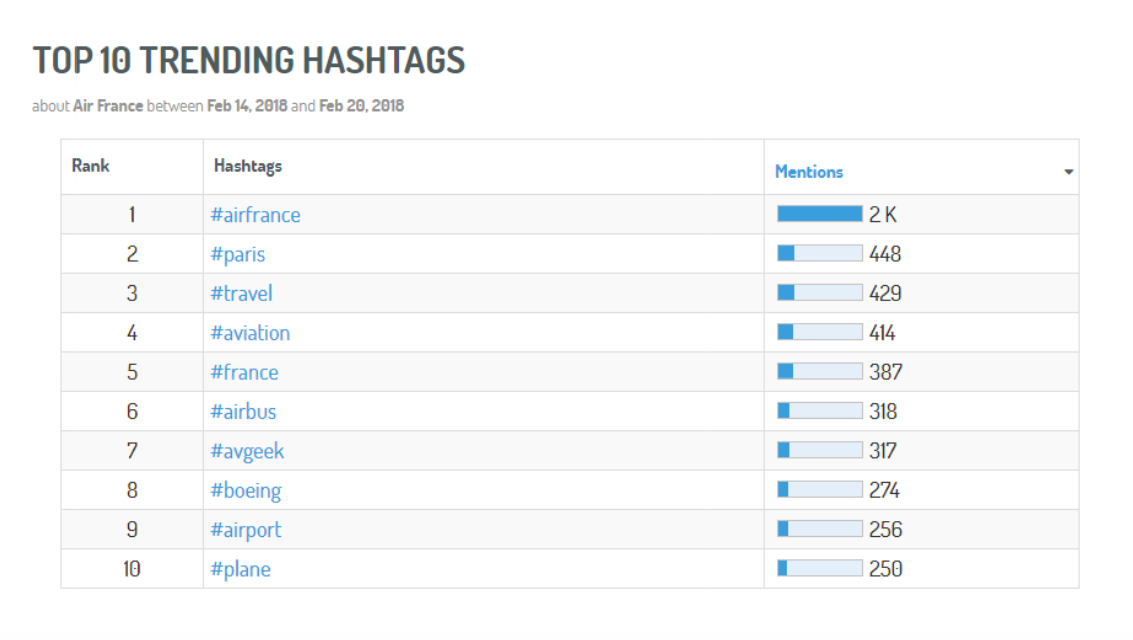
A Top 10 Trending Hashtags search via Digimind
The above example showcases another Air France search using Digimind’s Social Listening tool to unearth the most-used hashtags surrounding conversations that used the term “Air France”. Looking beyond the basic commonality of these hashtags, a true marketer would be able to see the underlying psychology that goes into their placement on this list, and figure out a way to shift their brand’s messaging towards whatever is most relevant to their customers.
Guessing: To their credit, Guessing is being a good team player despite the losing streak - tracking trends is where the buck ends for this method of marketing, as without social media monitoring, they’re unable to accurately measure the preferences and interests of their target audience. This makes any effort to either increase its reach, or improve its market standing that much more difficult due to a lack of context for any proposed marketing strategies. You try suggesting to your boss at the Build-A-Bear Workshop company that they need to make a new chess piece-shaped teddy bear product for all their stores because the popular Netflix series, “The Queen’s Gambit”, is popular with young girls. That may be so, but without knowing WHY that is, they’re liable to get into a lot of trouble considering how the popularity of said show comes from all the substance addiction, scandal, and mature themes that would suit a teddy bear quite poorly.
Social Listening: 4 | Guessing: 0
Round 5. Listen & Out Game The Competition
Social Listening: Knowing the endgame of your competition is just the nail in the coffin when it comes to Social Listening vs. Guessing. Having the inside scoop on a rivaling brand’s brand reputation, key audience demographics, and digital strategies, makes for a hard-to-beat finisher for this game. Guessing can’t replicate the clear advantage of social listening’s ability to help companies tweak their marketing campaigns in order to outperform and differentiate themselves from their competitors. See the example below for a better idea of this concept at play:
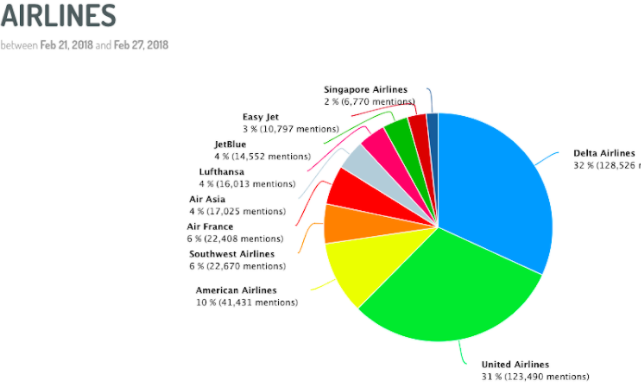
A Competition Analysis pie chart taken from the Digimind social listening platform
Air France could use this graphic gleaned from social listening to provide a better grasp of where they stand in the industry, who is beating them in the market, and who they’re ahead of. As invaluable as this data can be, what’s most illuminating about these percentages is the reason WHY this is the case, with marketing and insights professionals better positioned to research the competition and see what’s working and what isn’t. Guessing just doesn’t hold the same value. Sorry Guessing.
Guessing: You may have noticed that, perhaps unfairly, Social Listening has been aided in this fight with visual aids to better illustrate its superiority over guessing, but that’s not intentional, as we said at the beginning of this matchup that both players would get their fair shake. But since Guessing is such a basic method of marketing, it doesn’t have anything to show for it. Let’s not press the matter any further and allow Guessing to lose this game gracefully… 😞
Social Listening: 05 | Guessing: 00
Congratulations to anyone who tossed their hats in with Social Listening! It was a grand slam win for the side of AI-supported social intelligence tools. That being said, Social Listening isn’t just a win for the betting crowd, they’re also a win for anyone that adopts their services. Guessing is a losing person's game, with no clear evidence for success when going down that risky path. Brands wanting to win with their next marketing strategy or campaign need to understand this and play ball when it comes to where they derive their insights from, especially if they want to remain the reigning champions within their respective industries.
GO TEAM SOCIAL!!!
Written by Micah Levin
With a background in creative writing, advertising, and psychology, Micah is a copywriter in name and a Digiminder at heart. When he's not developing content for agencies, you can find him crafting novels, cooking and running around in Brooklyn, NY.

